The Bellevue, Ohio Roundhouse
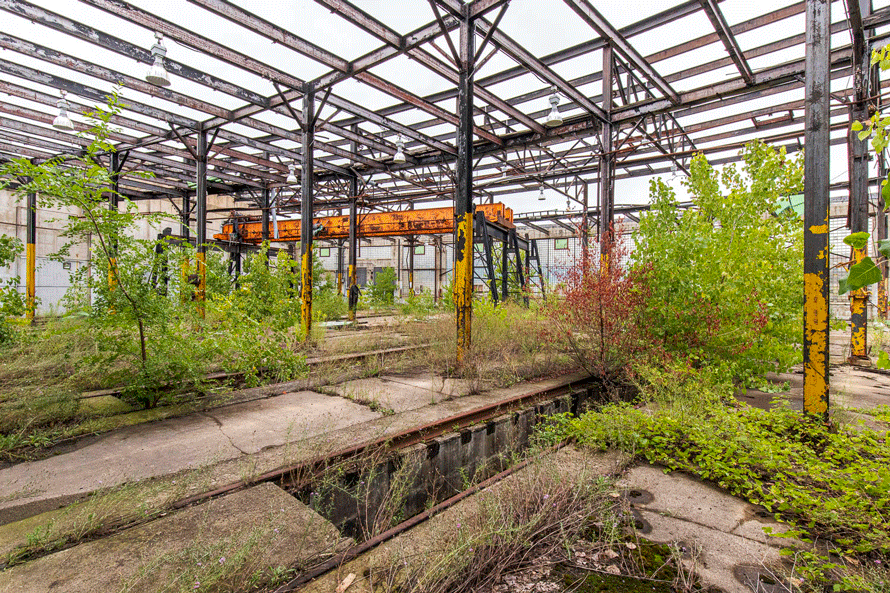
The railroad roundhouse is a purely utilitarian, yet graceful design, that clearly demonstrates the design and engineering maxim that form follows function. Comprised of two uniquely engineered components; the turntable and the shed, the roundhouse is designed to house the maximum number of locomotives in a confined physical space. At its core is the turntable, which allows it to align a locomotive to any track that radiates from the circle. The accompanying shed is situated around the turntable pit on a concentric ring, ranging in size from a portion of a geometric arch to a full circle. While the roundhouse is designed for maximum efficiency, it is natural to humanize it and think of the roundhouse as a stable for iron horses, or a bustlingservice station in which railroaders are busy fussing over locomotives to keep them in top running condition. But to me, the railroad with its network of track and supporting infrastructure is one giant sprawling and complex machine, with the roundhouse serving as just one cog of it.
In the functional, utilitarian environment of the roundhouse, everything has a place and a purpose. There were certainly no allowances designed for any aspects of human comfort, be they for the body or soul. Organic flesh and bones were forced to contort to the machine and find their own accommodation while toiling over the vital roaming locomotives. If there was one place in the roundhouse that might accommodate something non-functional, it would most likely be in the foreman’s office. As head of his machine, he might tolerate a plant on his desk or windowsill. But having dedicated years of company service to achieve this position, he was used to accommodating the machine and probably didn’t bring it in himself. More likely, he allowed his wife the pleasure, for she wanted her husband to have a gentle reminder of life outside the roundhouse.
But like many parts of this great machine, the roundhouse became obsolete when improved and more efficient propulsion was upgraded in the network. With the arrival of diesel-electric locomotion, this cog lost its purpose. Across the great network of steel, roundhouses were demoted from their prime role and went into a steady state of decline, and for most, demolition. For the fortunate roundhouses that were abandoned, but spared the wrecking ball, another organic living thing found its walls inviting.
One such roundhouse resides in Bellevue, Ohio. Built by the New York, Chicago and St. Louis Railroad, commonly referred to as the Nickel Plate Road, in 1948 to replace an older facility, it may be the last new roundhouse built in North America from the ground up. It’s remarkable that the railroad decided to invest in a new facility for a machine that most of its competitors had already declared obsolete. A January, 1949 article in Modern Railroads magazine touts how the new roundhouse design will increase the efficiency of the 150 men who work inside during three around the clock shifts. It goes without saying that increased efficiency for the railroad really means more cost effectiveness, but it was not enough to overcome the economic advantages of the diesel. The facility served the Nickel Plate Road through the final years of steam locomotion, with the last serviced here in 1959, rendering this cog of the machine defunct. Without a purpose, the machine slowly fell into a long state of dis-repair. After the Norfolk & Western Railroad purchased the Nickel Plate Road, the roundhouse carried on as a facility for light maintenance and storage into the Norfolk Southern era. Finally, with the roof starting to cave in and becoming a dangerous liability, the railroad removed it around 2012, leaving the walls and foundation intact. With wind, light and water free to enter, the conditions were set for the natural world to enter the machine.
My own entrance came this past Summer, when I passed through Ohio on a long weekend of photography. Prior to going, I had checked out the Bellevue site on Google Earth and knew that it still stood but wasn’t sure of its condition. Once there, I found the roundhouse was to be in much better shape than I expected, with the walls intact and the turntable appearing to be in good working order. As I moved closer to photograph the engine stall doors, I discovered that one of them had a loose frame, creating a gap which allowing me to peer inside. That initial peek really astonished me, for I was not in awe of the roundhouse’s internal structure, but of the greenery. The sight of such a lush interior landscape was completely unexpected and took my breath away. I just had to go in and once I did, stood in wonder at the juxtaposition of flora with hard concrete and steel. I thought to myself “this is the garden in the machine!”. Obviously, this is my reference to the seminal book analyzing the conflict between technology and nature by Leo Marx entitled The Machine in the Garden. While the theme of the book is complex, the basic premise is that technology, especially steam power, rapidly changed our cultural relationship to the natural landscape. To visually interpret this theme, the book was released with a cover design that has a steam locomotive superimposed over a scratchy green illustration representing nature. In the new edition, the cover instead uses the well-known George Inness painting entitled The Lackawanna Valley, which portrays the man-altered landscape of Scranton, Pennsylvania after the arrival of the steam railroad.
Nature doesn’t give up its domain willingly and it’s only through the continued intervention of man that it is kept at bay. When man gives up that fight, nature will be quick to respond. Here in the roundhouse, a most spare, and seemingly inhospitable space, nature secretly planted its first seed. That seed could have been dropped by a passing bird, or maybe a strong wind carried it in. The smallest crack or parting line in the concrete provides ample space for this seed to grab a toehold. With encouragement from allies; sun and atmosphere, to supply a steady stream of light and water, the interloper makes a stand. Soon, a steady army of flora follows and finds ground to reclaim. Inspection pits that once hosted men toiling under giant machines now serve as giant water troughs. These reservoirs supply flora a steady, reliable supply of water, as well as providing a thriving habitat for insects, tadpoles, frogs, and other creatures.
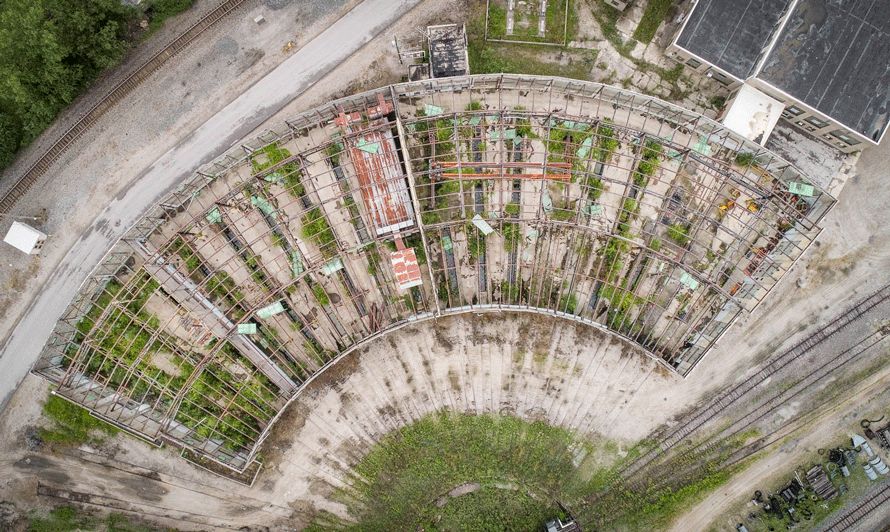
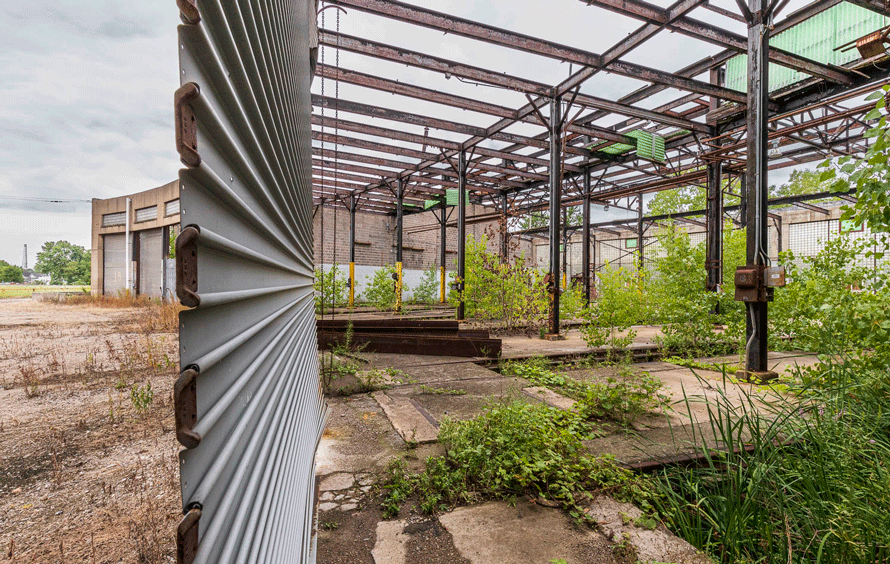
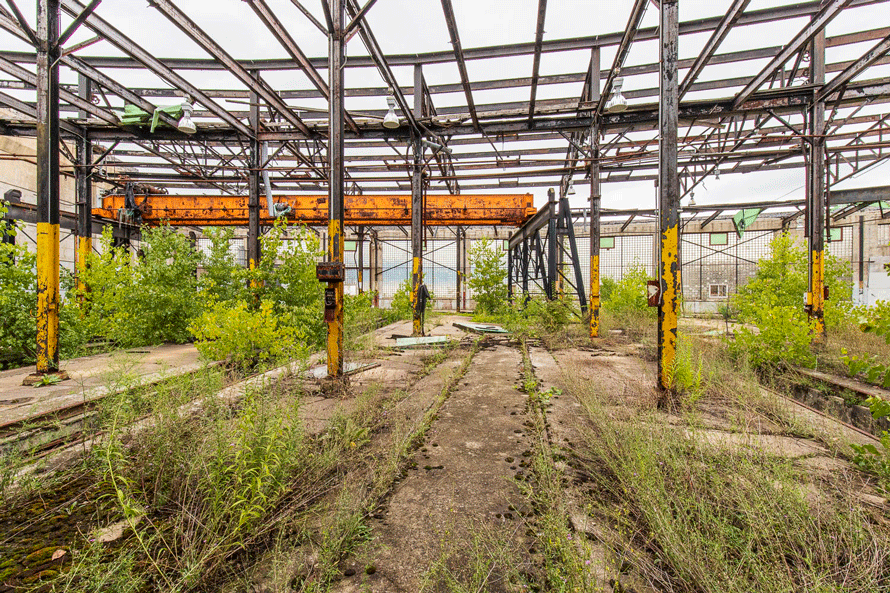
gap, fill it with just enough soil to take a seed, and quickly reclaim its domain.
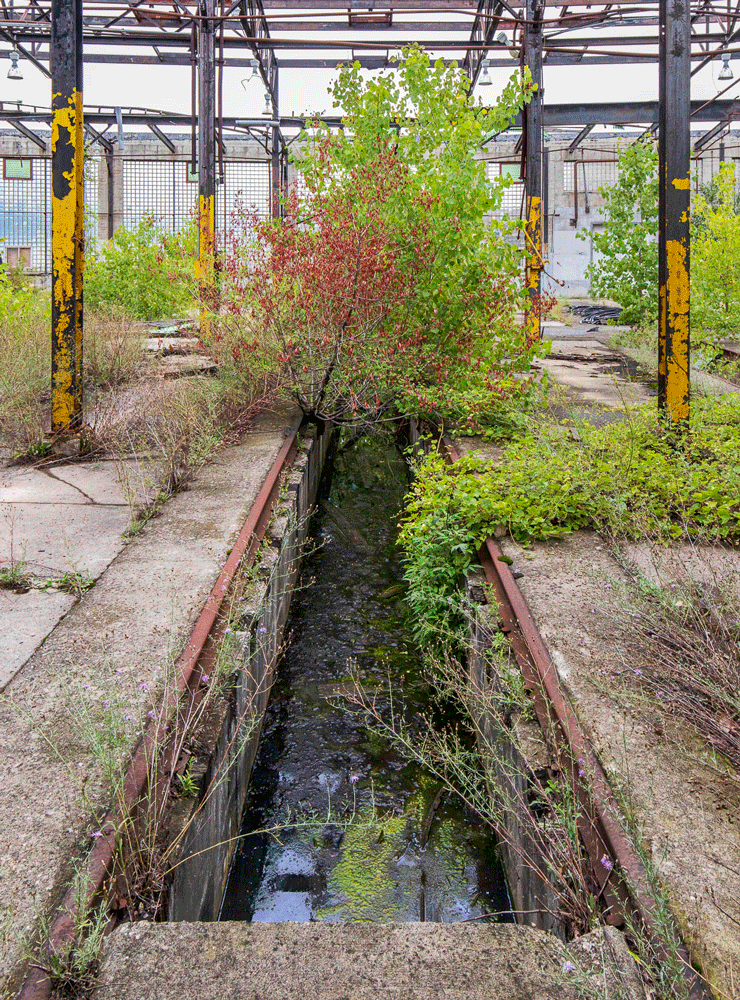
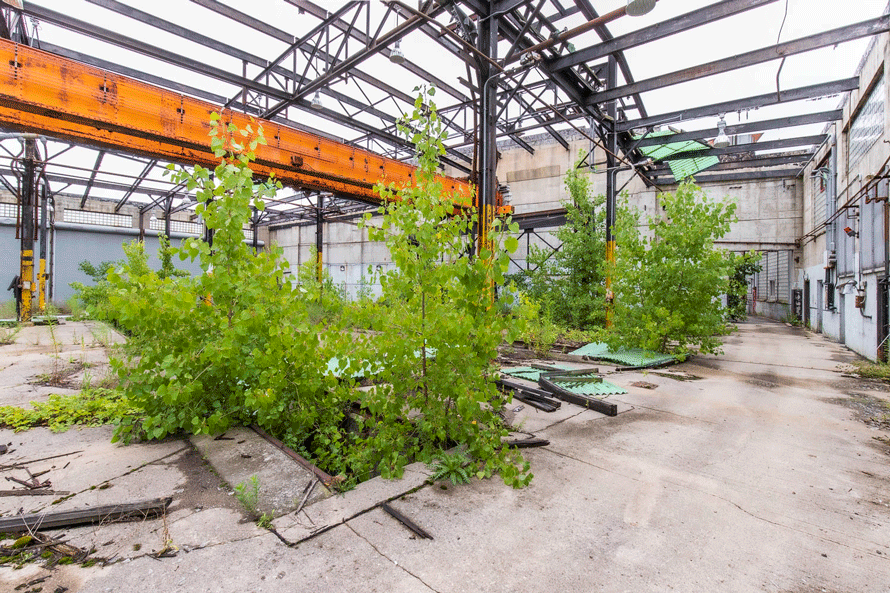
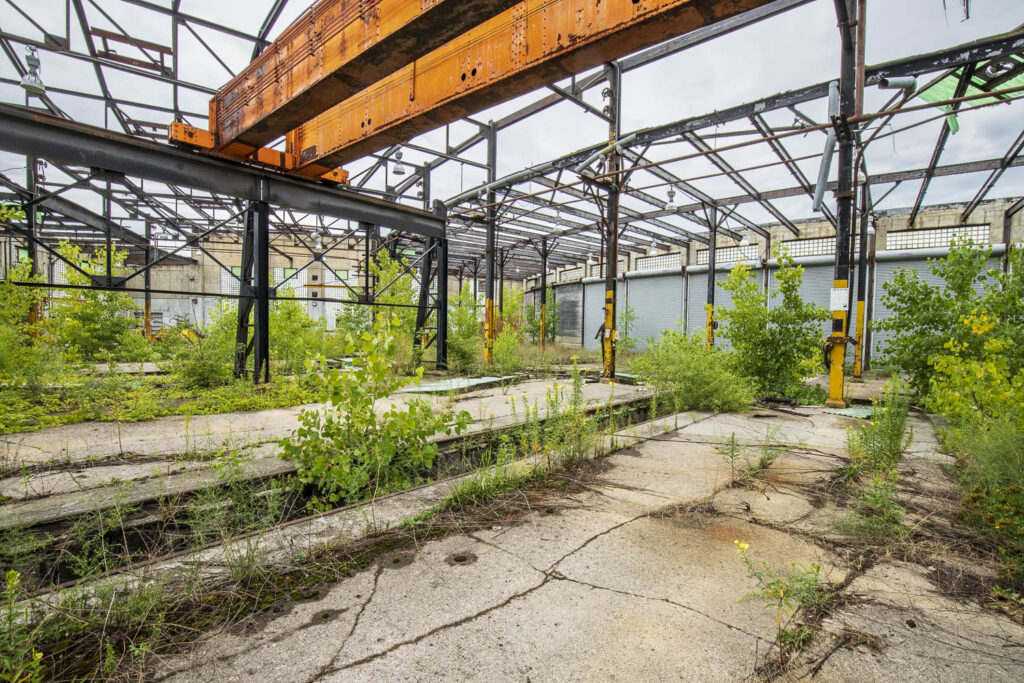
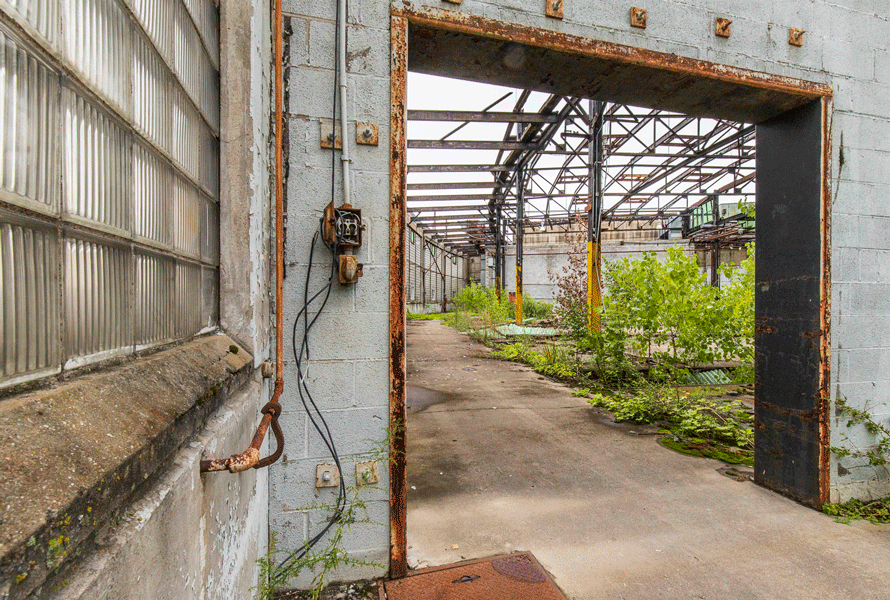
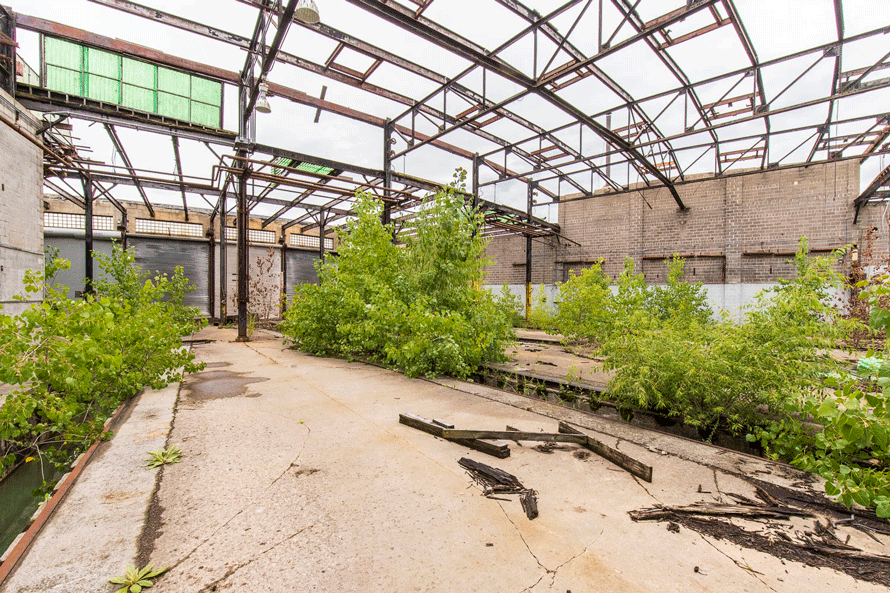
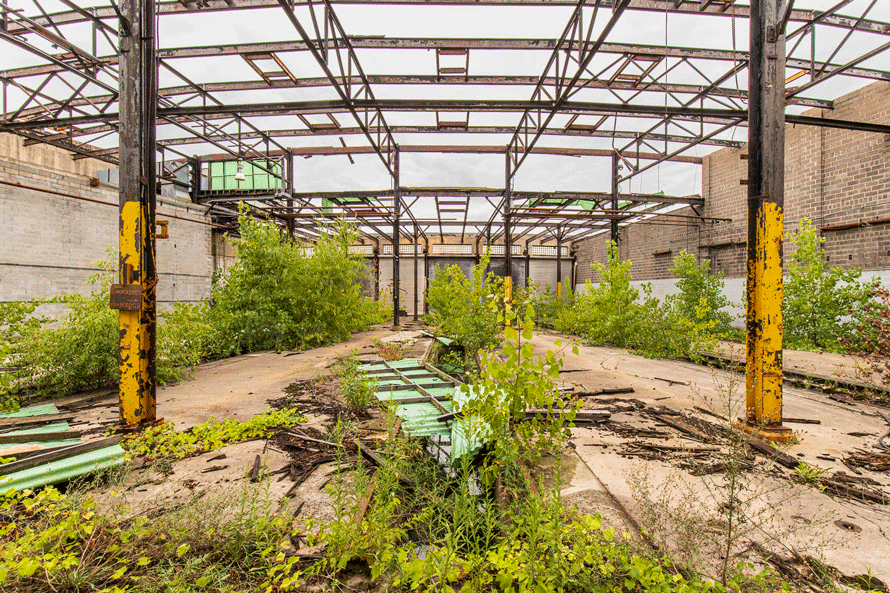
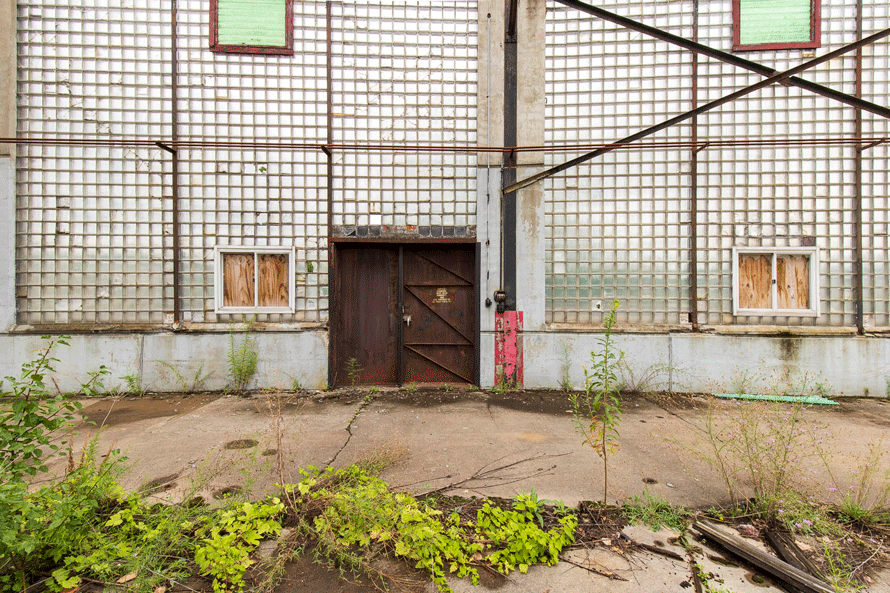
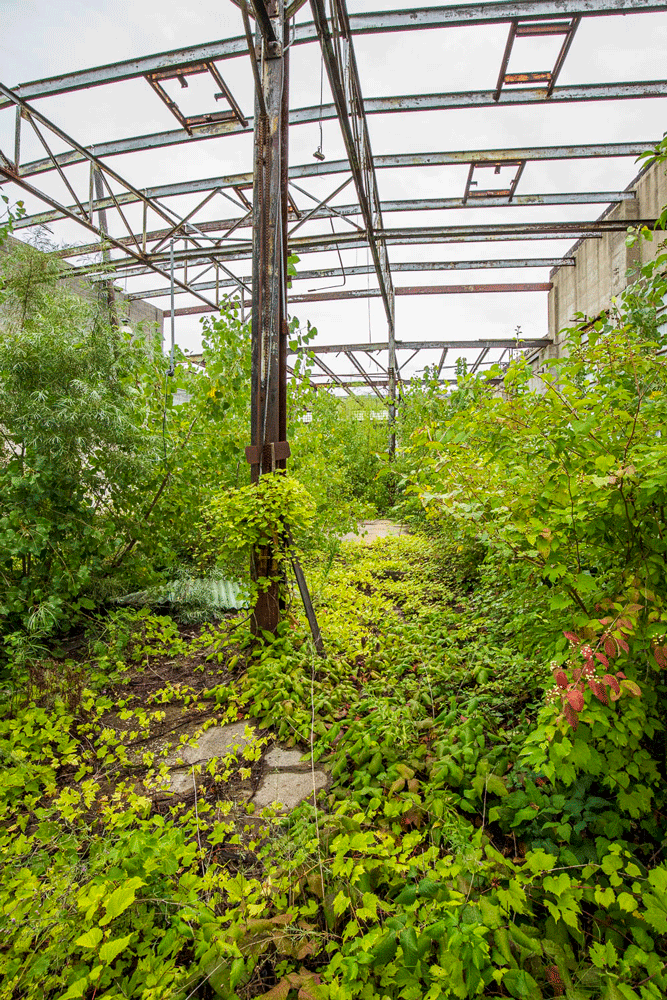
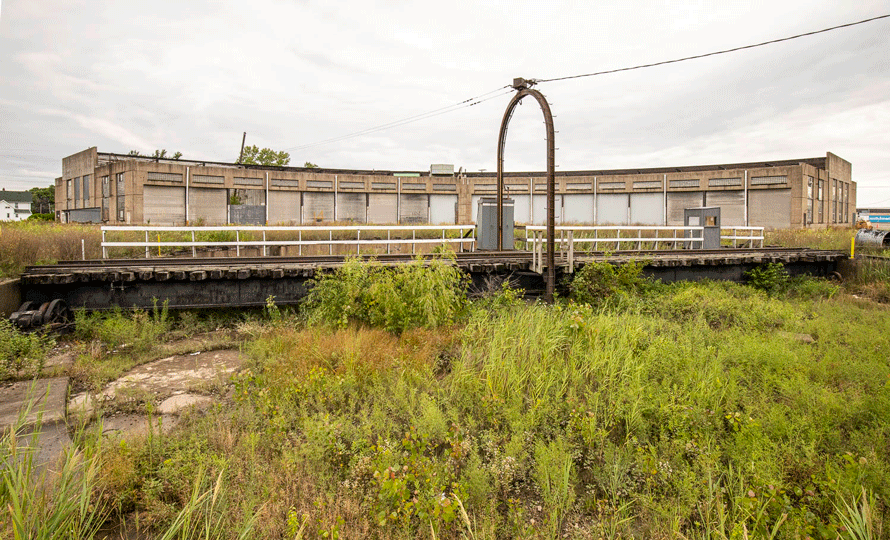
A decade or so has passed since nature made its first presence in this machine. While the machine was built to maximize the efficiency of the humans that once toiled inside, it is an equally efficient engine for flora to thrive. Since that first seed took root in this accidental greenhouse, the Bellevue Roundhouse has been a silent witness to the rise of the garden in the machine. In its current state, a sublime environment lives here in a way its builders never intended, nor could conceive. But nature will not be satisfied with half-measures—it wants its full domain back. The garden in the machine grows steadily for now, until man tears down this roundhouse.
Then the cycle will start anew.
Eric Williams – Photographs and text Copyright 2022
What a interesting look on this subject! Amazing in this day and age the structure shows no sign of vandalism. Great story and pictures.
John, the “clean”, un-vandalized interior struck me as well! The intact industrial walls and structure give the garden a fitting environment that left me in awe!
Great Photos Great article
Eric, the way you captured this subject is beautifully matched by your eloquent and engaging text.
This was a joy to absorb, I felt as though I had entered the garden with you. Thank you for sharing the experience!
Bryan, thanks so much! The power of these railroad places is that they can still surprise and engage one long after their intended use has gone. It’s what drives me to explore and look deeper into the history of each place that I discover for the first time.
What a beautiful essay. Nature always wins… it just takes time.
Thank you! I would like to come back in 10 years and see how much further the garden has evolved. Hopefully, the roundhouse will still be there, and be un-touched by man!?
There is reality for every model, even if it is by accident. My father built a turntable and roundhouse for his, now my model railroad almost 55 years ago and it still operates as well today as when he built it. Dad, for some reason wasn’t to keen on structure roofs, and to this day only 1/3 of the roof is complete. In a world that would call this structure unsafe and have it torn down, it is refreshing that at least when the photographer was there, that the structure was more or less in tact. To our loss such railroad architecture won’t be repeated.
Bruce, it is surprising that the roundhouse still stands. Like you mention, all railroads are quick to demolish anything that may cost them either unnecessary property taxes or potential liability. Knowing that this roundhouse is most likely on borrowed time, I felt an urgency to capture its present state.
Hi
I retired from the Muniipal Railway in San Franciso, in what had been an old power station, it was a similair situation, but it had a large rectangular skylight. Looking into the space was amazing from a dark hallway (the office building was closed after the 89 quake), lots of light, plants growing up in places. Wished I’d had a camera when I was there. The space is now a community center and the space is known as the Geneva carbarn and Powerhouse (check on the web). Nice space, still the streetcar yard exists too ! Thank you for this article. They could do a lot with the space you’ve shown all of us.
Karl J.
Love the reverse reference to the 1964 Leo Marx book, The Machine in the Garden, which traces the visual integration of the Iron Horse into the American pastoral landscape. Can this roundhouse campus be safely turned into a community garden. It would be the ultimate statement of how nature over time retakes what the railroad wrought and coexists with it in a new world order. Great job, Eric!
Oh MY! Awesome work, my friend!